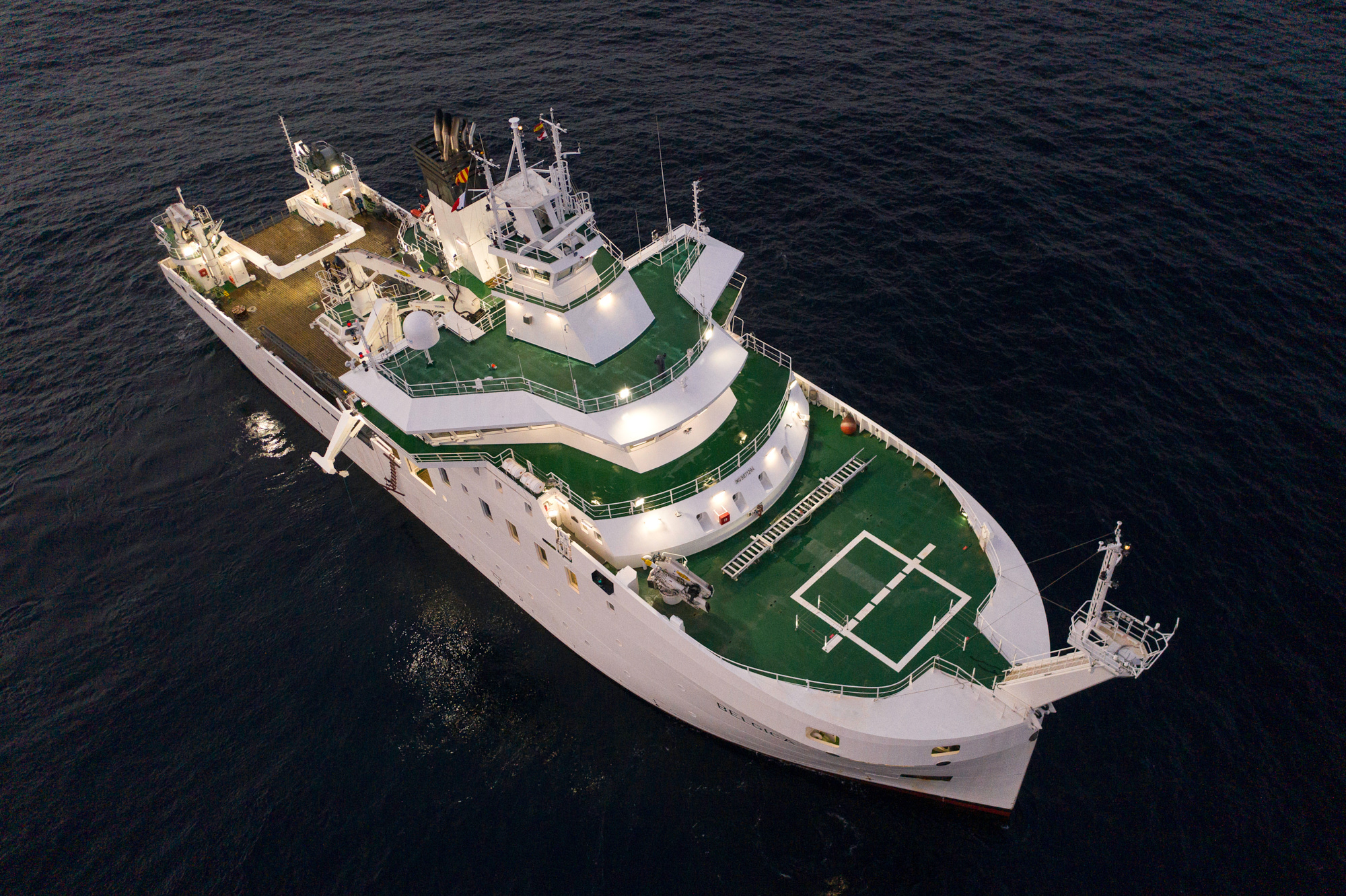Sand is vital for building the foundations of our society. Currently, around 50 billion tonnes of this raw material are extracted worldwide each year, and the growing world population is only increasing demand. The environmental and social impacts are forcing us to rethink our dealings with sand. In a new report launched today by the United Nations Environment Programme (UNEP), experts from around the world make recommendations to switch to better practices for the extraction and management of sand. Experts from Belgium were also involved. New developments in Belgian policy proactively anticipate an increasing demand for marine sand.
50 billion tonnes, this is the amount of sand (and gravel) that we as a world population consume every year, making it the second most used resource in the world after water. Enough to build a wall 27 metres wide and 27 metres high around planet Earth. Despite the strategic importance of sand, its extraction, use and management are largely unregulated in many parts of the world, with numerous environmental and social consequences that are largely overlooked. Where sand plays an active role in the ecosystem, such as in rivers, coasts and shallow seas, extraction can lead to erosion, salinisation of aquifers, loss of storm protection and impacts on biodiversity, which in turn threaten our water supply, food production, fisheries or the tourism industry, among others.
Increasing demand
Sand is vital for building the foundations of our society: our houses, roads, bridges, hospitals, schools, dams, but also, for example, photovoltaic panels to produce renewable energy, … these are just some of the many applications of sand that we have developed. Sand can justifiably be called the unrecognised hero of our development.
We have become accustomed to easily accessible sand supplies, with the result that sand is often used faster than it can be replenished by natural geological processes. As the world population is growing rapidly, and the proportion of the urban population is expected to increase to over 68% by 2050, the demand for sand will only increase.
10 recommendations to avert a crisis
It is therefore high time to reassess our dealings with sand, and to recognise sand as a strategic resource. This is stated in the new report Sand and Sustainability: 10 strategic recommendations to avert a crisis‘ launched today by the United Nations Environment Programme (UNEP). In this report, experts from around the world and from various sectors bring together recommendations to move towards better practices for the extraction and management of sand.

The recommendations include establishing integrated policy and legislative frameworks, mapping sand resources, promoting resource efficiency and circularity, responsible procurement and restoring degraded ecosystems. The major objective of this report is to encourage policy makers at all levels of government to adopt relevant policies and standards and promote best practices in line with local sand dependencies and development needs.
The 10 recommendations
- Recognise sand as a strategic resource that provides critical ecosystem services and is the basis for building vital infrastructure in developing cities around the world.
- Consult with all stakeholders (involved and impacted) on decision-making and implementation of sand extraction.
- Enable the transition to a regenerative and circular economy.
- Implement strategic and integrated policy and legislative frameworks, in line with local, national and regional realities.
- Property rights and regulated access to sand resources through mineral rights and permits contribute to sustainable sand mining.
- Map, monitor, and report on sand resources for transparent, science-based and data-driven decision-making.
- Promote the development of best practice guidelines and national standards, as well as a coherent international framework.
- Reduce the use of sand and replace it with alternatives and recycled sand products where possible.
- Buy sand in an ethical, sustainable and socially conscious way.
- Restore ecosystems and compensate for losses by increasing the knowledge base, integrating mitigation measures in mining operations, and promoting nature-based solutions.
Pro-active management of marine sand resources in Belgium
The demand for sand, and in particular marine sand, is steadily increasing in Belgium. The Continental Shelf Service of the Federal Public Service Economy manages Belgium’s sea sand resources and does so in a proactive manner, relying on the best available knowledge and monitoring methodology. Building on research results, an innovative policy is in force that imposes a lower limit on extraction based on the geological reserve, as well as criteria to minimise the impact on the seabed environment. This new benchmark has been in place since 2020, is being closely monitored, and represents a real paradigm shift in favour of sustainable management of the resource.
An evaluation of the marine sand exploitation in the Belgian part of the North Sea leads to the conclusion that the management of our marine sand stock is already in line with recommendations 1, 4, 5, 6, 7 and 9 of the new UNEP report. Recommendations 2, 3 and 8, which focus on the transition to a circular sand economy, are obviously also very important to implement, and fit into a larger transition framework which in the meantime should not prevent us from continuing the current marine sand exploitation within the established sustainable environmental and socio-economic boundaries. Based on the monitoring results (bathygeomorphology, sediment and benthic biota) obtained before, during and after the sand extraction in various Belgian sand extraction zones, recommendation 10 on ecosystem restoration is not critical for the Belgian part of the North Sea.
Belgian contribution to the UNEP report
Vera Van Lancker of the Royal Belgian Institute of Natural Sciences and professor at Ghent University was responsible for the recommendation on sand mapping and use, environmental monitoring and reporting with emphasis on the need for decision support systems (Recommendation 6). Globally, but also regionally, the quality and quantity of available sand is hardly known. However, the demand for sand is unprecedentedly high and increasing, with large-scale mining possibly becoming the new norm. However, the knowledge base to support such extraction is minimal. The joint consideration of geological, environmental and socio-economic parameters is therefore of paramount importance for informed decisions. With increasing extraction, and possible scarcity, the dependencies between man and nature, but also between sandy and poor regions, are put to the test. For a more systematic understanding of these dependencies, and to support (cross-border) decision-making, the need for data, knowledge and information, as well as predictive science, is greater than ever.
Vera: “The challenges of increasing sand use are great, whereby contemporary practices and associated impacts may not be appropriate. An accelerated mapping of sand resources is needed for which structural cooperation offers the most perspective. This requires more standardisation in the classification of raw materials, which also takes into account the environmental and socio-economic dimension. Predictive modelling of extraction scenarios and man-nature dependencies is becoming more important.”
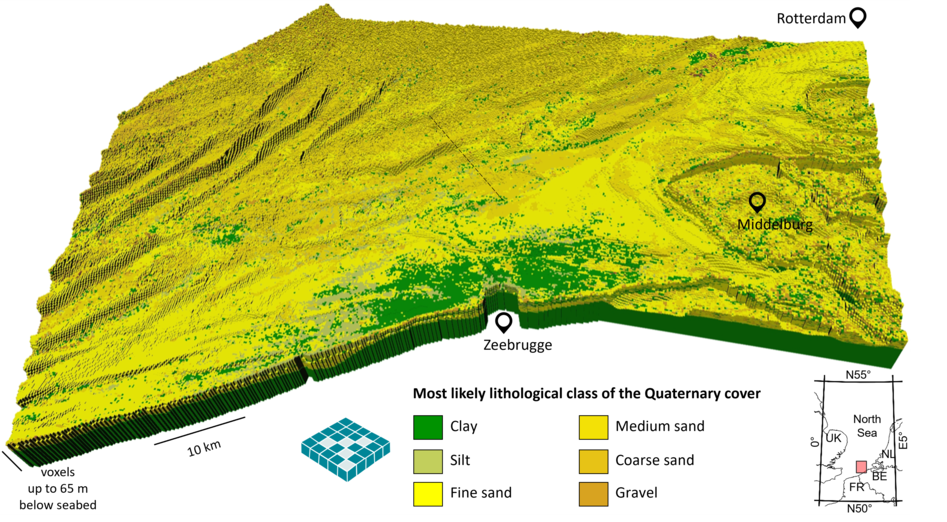
Aurora Torres, Marie Skłodowska-Curie Postdoctoral Fellow at the Université Catholique de Louvain, led the recommendation on restoring degraded ecosystems (Recommendation 10), together with other experts. Sand is fundamental to maintaining biodiversity and the variety of ecosystem services that meet societal needs. Policy makers, industry and other stakeholders are therefore encouraged to take measures to avoid and minimise risks to biodiversity and ecosystem services, restore ecosystems and compensate for remaining losses. Also in the perspective of the UN targets for ecosystem restoration (2021-2030), further efforts are needed to better document the impacts of mining on biodiversity and ecosystem services, to improve the effectiveness of mitigation and restoration efforts, and to ensure the use of science-based assessment and monitoring as a basis for impact assessment, mitigation planning and compensation. Finally, sand also contributes to the restoration and protection of land, freshwater systems or coastal areas against erosion or flooding. Nature-based solutions and ‘building with nature’ approaches are strongly recommended here.
Aurora: ” Transitioning to a circular economy requires that we become less dependent on natural systems as material suppliers. When extraction is deemed necessary, sand resources must be obtained in a responsible manner that prevents or minimises damage to ecosystems and people.”
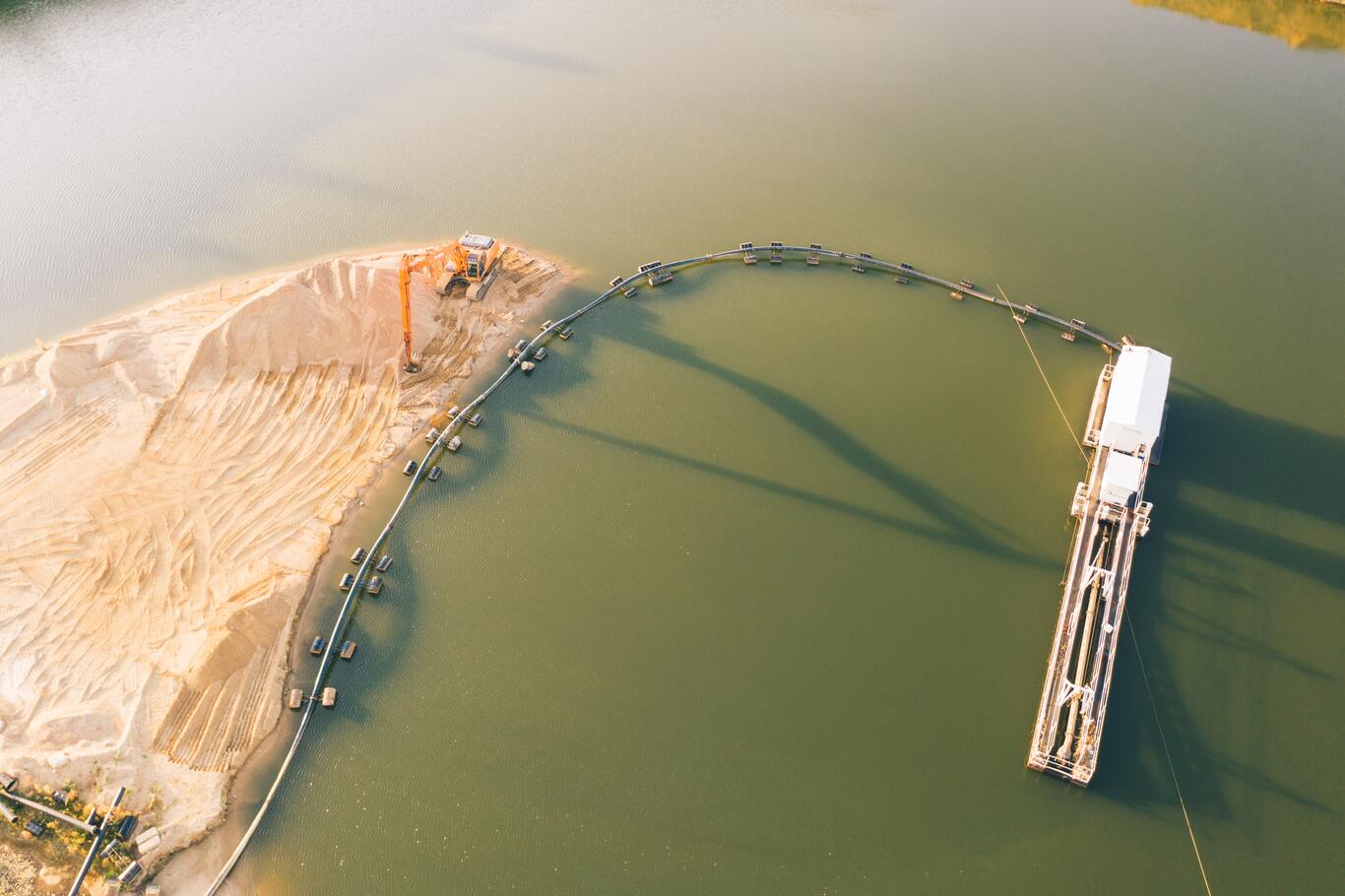
Astrid Smeets and colleagues of Bureau Brussels contributed to recommendations on how to include sustainability in the entire supply chain from the origin of sand to its user, and how to achieve a broader societal change (Recommendations 3 and 9). These range from (re)educating architects to use alternative materials, to a fiscal policy directing financial flows towards alternatives to sand or more sustainable extraction and use. In order to create a stimulating policy, it is important that governments and companies come together to share and apply best practices. By tackling a more sustainable sand policy at an international level, one can learn from local solutions that already exist and which, with minor adjustments, can easily be applied on the other side of the world. This is both time and cost efficient.
Astrid: “The transition to a more sustainable raw materials policy will also be felt here in Belgium. We see Europe tackling the sustainability of supply chains at an unseen pace with, among others, the EU Taxonomy and supply chain liability. Companies and governments will have to account for the impact of their activities on people and the environment. In addition, they will have to demonstrate how sustainable they and their suppliers are. Sand will undoubtedly also be on the agenda in the near future. With the ten recommendations from the report, governments, knowledge institutions, the business community and consumers can get started to avert a major crisis. The sooner we start looking for solutions, the better for people, planet and our economy.”

ANNEX 1: More information on marine sand extraction in Belgium
Numbers and more information on the management of marine sand resources in the Belgian part of the North Sea, the scientific basis, and the ecological impact:
- Continental Shelf Service: General – Study Day 19 Nov 2021 – A 360° perspective on Sea Sand (French – Dutch)
- RBINS/MUMM
- Compendium Coast & Sea
ANNEX 2: Belgian partners and contacts
The FPS Economy, SMEs, Self-employed and Energy, Continental Shelf Service, is the competent government agency for sand extraction at sea. Together with the Royal Belgian Institute for Natural Sciences (RBINS) and the Flanders Research Institute for Agriculture, Fisheries and Food (ILVO), the physical and biological changes in sand extraction areas are monitored, and recommendations are formulated to minimise the impact. During three-yearly study days, the results are presented in an integrated way, and attention is also paid to the broader sustainability framework.
Royal Belgian Institute for Natural Sciences (RBINS). Federal Scientific Institute that combines fundamental and applied research, among others for estimating the effects of human activities in marine waters. With regard to sand extraction, efforts are being made to better understand the variability of sediment characteristics and processes, to model the activity-pressure chain effects on the marine environment, and to formulate recommendations for a more sustainable use of marine resources. To this end, the RBINS coordinated the Belspo TILES project that mapped the quality and quantity of sand stocks. Further valorisation and new initiatives are being developed within the framework of the European ‘Geological Service of Europe’ action, in which the European Geological Services are joining forces in support of societal challenges.
Université Catholique de Louvain, Earth and Life Institute, has as a major goal the design of sustainable solutions to some of the biggest challenges facing our societies (e.g. transitions to sustainable land use, the influence of globalisation on decisions, and the interactions between public and private governance). UCLouvain is collaborating with Michigan State University to investigate important links between sand use, economic activity, environmental pressures and social impacts (SANDLINKS: https://cordis.europa.eu/project/id/846474).
Bureau Brussels is a public affairs consultancy supporting businesses, public authorities and non-profit organisations in the European policy-making process. Bureau Brussels supports for clients in various fields such as women’s health care, circular economy, sustainability, digital and financial sectors. From a circular point of view and a chain approach, the topic of ‘sand’ has also been on the agenda for a number of years.



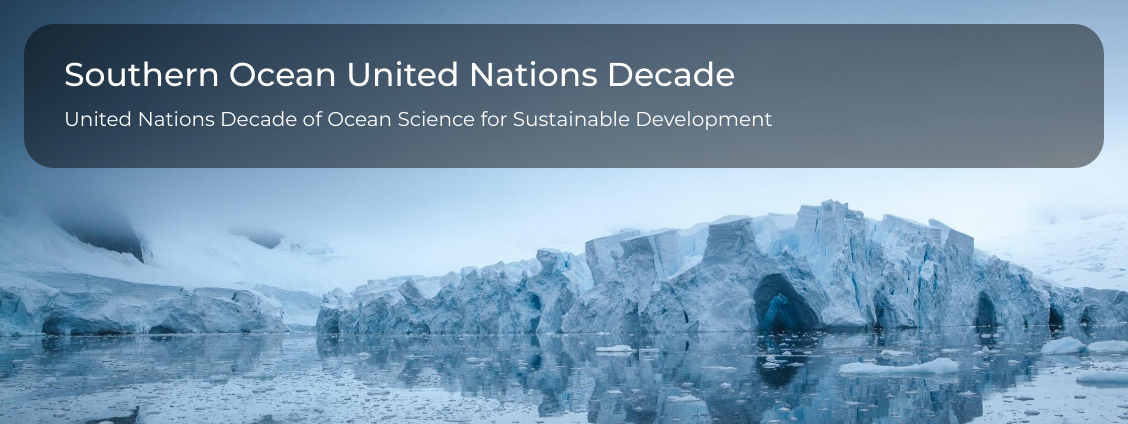












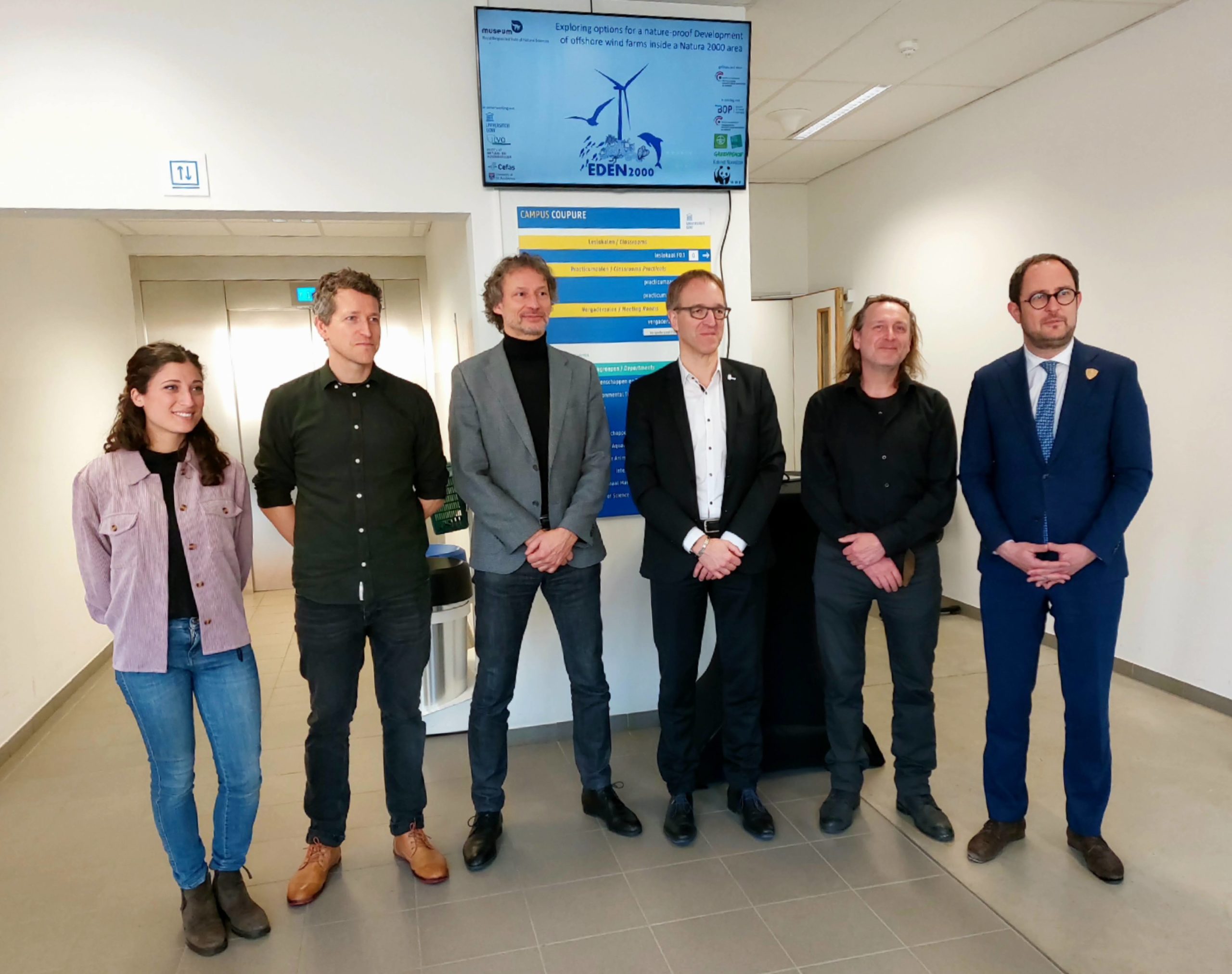



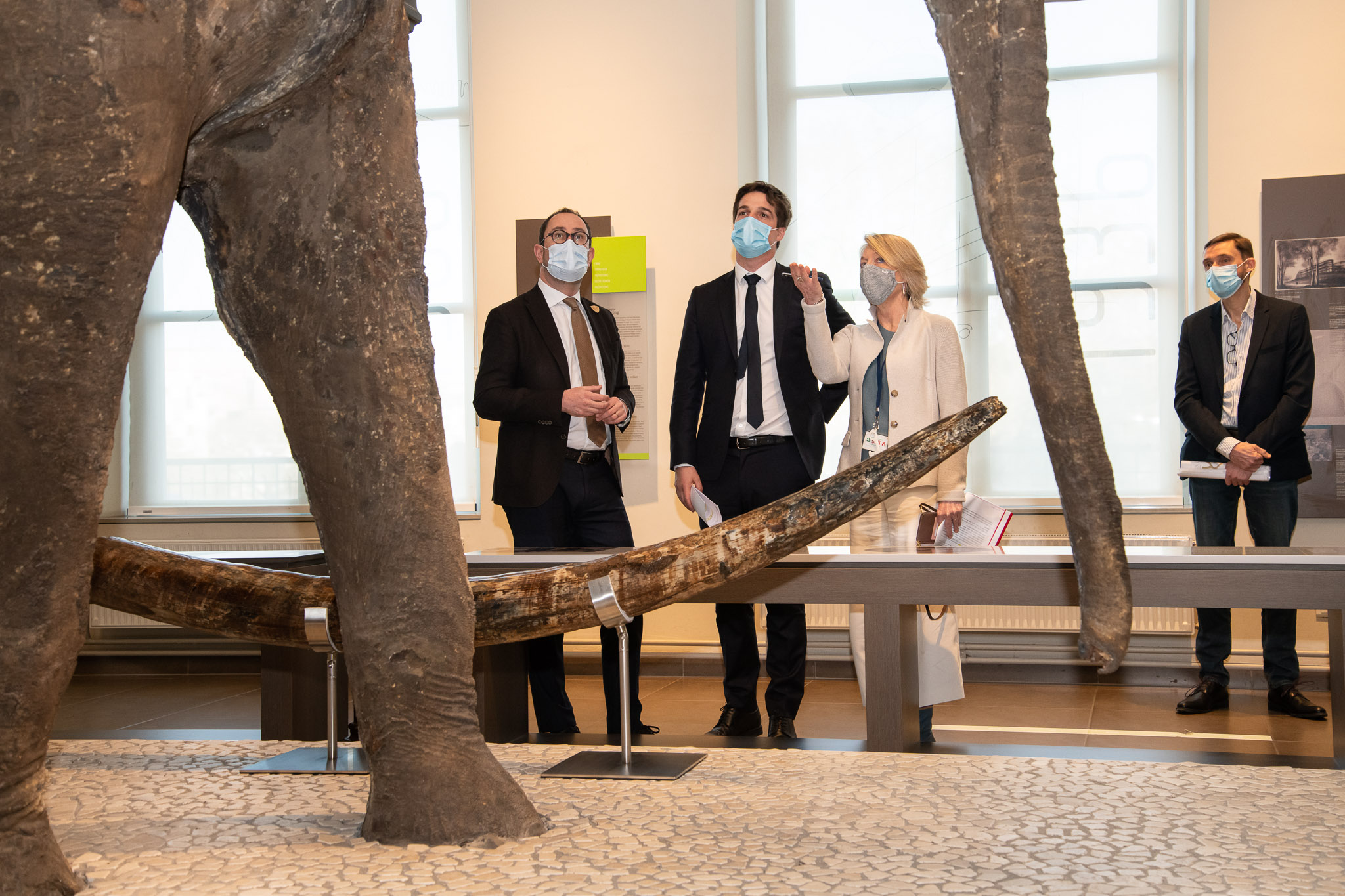

 On 31 December 2019, Belgium submitted a National Energy and Climate Plan to the European Commission which envisions a target figure of 17.5% for the contribution of the production of electricity from renewable energy sources by 2030. Offshore wind farms in the Belgian part of the North Sea are expected to make an important contribution to achieve that goal. They are in fact already doing so, as currently 10 % of the total Belgian electricity demand, or 50% of the electricity demand of all Belgian households, is already produced by offshore wind farms. This is realised by a total of 399 turbines in eight wind farms, grouped in a zone of 238 km² along the border with the Netherlands. After 12 years of construction, this zone was fully operational from the end of 2020 and accounts for an installed capacity of 2.26 Gigawatts (GW) and an average production of 8 TWh. This puts Belgium in the 5th place worldwide in the production of this form of energy. A second area for renewable energy of 285 km² is foreseen by the new Belgian marine spatial plan (2020-2026), aiming for an installed capacity of 3.1 to 3.5 GW in this zone.
On 31 December 2019, Belgium submitted a National Energy and Climate Plan to the European Commission which envisions a target figure of 17.5% for the contribution of the production of electricity from renewable energy sources by 2030. Offshore wind farms in the Belgian part of the North Sea are expected to make an important contribution to achieve that goal. They are in fact already doing so, as currently 10 % of the total Belgian electricity demand, or 50% of the electricity demand of all Belgian households, is already produced by offshore wind farms. This is realised by a total of 399 turbines in eight wind farms, grouped in a zone of 238 km² along the border with the Netherlands. After 12 years of construction, this zone was fully operational from the end of 2020 and accounts for an installed capacity of 2.26 Gigawatts (GW) and an average production of 8 TWh. This puts Belgium in the 5th place worldwide in the production of this form of energy. A second area for renewable energy of 285 km² is foreseen by the new Belgian marine spatial plan (2020-2026), aiming for an installed capacity of 3.1 to 3.5 GW in this zone.
 In their
In their 






